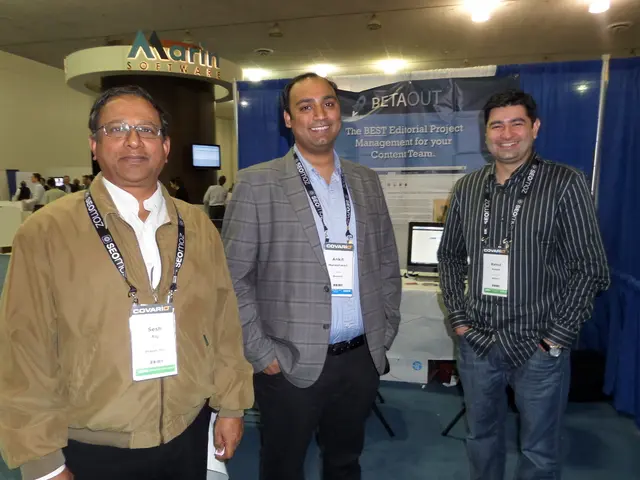Top 18 Highly Preferred Deep Learning Frameworks in the Year 2025
Artificial intelligence has undergone a transformative period with the integration of deep learning techniques. Now, machines are performing complex tasks previously considered unachievable, such as image recognition, natural language understanding, and autonomous driving. The backbone of this revolution is the implementation of deep learning frameworks, which simplify the development process for advanced neural networks.
Whether you are a novice delving into AI or an experienced professional constructing cutting-edge solutions, understanding deep learning frameworks is crucial to realizing your ideas.
Deep Learning Framework Explained
A deep learning framework serves as a software library that facilitates the creation, training, and deployment of neural networks. These frameworks offer built-in components, employing efficient algorithms alongside hardware speed-boosting elements, to streamline the development of AI solutions for programmers and researchers.
Popular frameworks like TensorFlow, PyTorch, and Keras are renowned for revolutionizing model development, boasting scientific libraries that have fostered advancements in computer vision, natural language processing, and robotics.
Top 18 Deep Learning Frameworks in 2025
Several popular deep learning frameworks are widely adopted. These include:
- TensorFlow / Swift for TensorFlow: This open-source deep learning framework, developed by Google, delivers high scalability and versatility. Its ecosystem benefits from the native integration with features from the Swift programming language.
- Key Features:
- Cross-platform support for mobile, web, and cloud deployment.
- High-performance computation with GPU/TPU acceleration.
- Prebuilt models, together with TensorFlow Lite and TensorFlow.js tools, constitute a comprehensive library of resources.
- Key Features:
- PyTorch: Researchers and experimenters rely on PyTorch due to its dynamic computation graphs, making it an ideal option because of its user-friendly interface and automated debugging tools.
- Key Features:
- The flexible nature of dynamic computation graphs supports model development flexibility during the creation process.
- Built-in GPU acceleration capabilities improve overall performance.
- Substantial community backing offers vast libraries with ready-made models.
- Key Features:
- Keras: As a high-level deep learning API, Keras (developed directly from TensorFlow) prioritizes simplicity and user accessibility. Its versatility for artificial neural network development speeds up both prototyping and model creation.
- Key Features:
- User-friendly and modular API for quick model building.
- Supports TensorFlow, Theano, and CNTK as multiple backend options.
- The toolkit includes various prebuilt layers and toolkit elements for personalization options.
- Key Features:
- PaddlePaddle: Developed by Baidu, PaddlePaddle (PArallel Distributed Deep LEarning) processes large models efficiently across industrial sectors due to its scalable design for distributed training and deployment functions.
- Key Features:
- Platform architecture features scalable design properties for distributed training procedures and deployment functions.
- Native tools and libraries for natural language processing and computer vision.
- Flexible API for seamless integration with other platforms and custom development.
- Key Features:
- MXNet: MXNet delivers programming language versatility and efficient functionality, offering a lightweight structure that is suitable for both research needs and production work, particularly in cloud-based solutions.
- Key Features:
- MXNet offers distributed training support, enabling the processing of big datasets and extensive models.
- MXNet provides deep learning capabilities through API support in Python, R, Java, Scala.
- Strong memory allocation techniques drive improved resource management, leading to enhanced computation speed.
- Key Features:
- Caffe: The popular deep learning framework Caffe uses convolutional architecture for fast feature embedding, making it ideal for computer vision tasks like image classification and object detection.
- Key Features:
- Highly efficient with low latency processing, ideal for real-time applications.
- The platform follows a modular design and provides ready-to-use layers for designers to modify and manipulate.
- Extensive collection of pre-trained models available through the Caffe Model Zoo.
- Key Features:
- [More frameworks detailed in the original text]
In conclusion, deep learning frameworks have democratized the process of building, training, and deploying AI models, making advanced machine learning accessible for developers and researchers alike. Choosing the right framework empowers innovation and accelerates breakthroughs in various industries.
Deep learning frameworks provide software libraries that streamline the creation, training, and deployment of neural networks, essential for both novice and advanced AI developers. Renowned frameworks like TensorFlow, PyTorch, and Keras, offer efficient algorithms and pre-built models useful in computer vision, natural language processing, and robotics. In 2025, the top deep learning frameworks to watch for include TensorFlow/Swift for TensorFlow, PyTorch, Keras, PaddlePaddle, MXNet, and Caffe. These platforms offer flexible APIs, native libraries, and versatile programming language support, empowering innovation across industries and facilitating rapid breakthroughs in AI research. Open-source technology promotes the continuous development and advancement of these frameworks. As artificial intelligence progresses, so will the integration of deep learning techniques, further enhancing the capabilities of machines in performing complex tasks, such as image recognition, natural language understanding, and autonomous driving.








